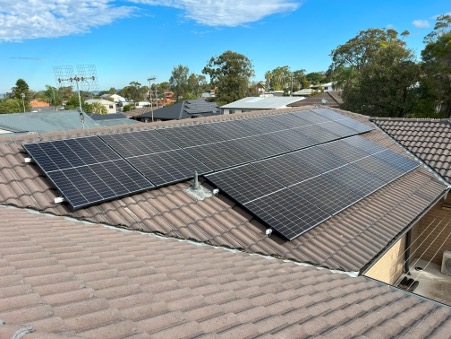Harnessing the Sun: A Comprehensive Detail to Solar Power Systems
With the world shifting toward sustainable energy solutions, solar power systems are becoming a prominent choice for homeowners and businesses. By converting sunlight into electricity, these systems offer a renewable and environmentally friendly alternative to traditional energy sources. This blog explores the key components, benefits, and considerations of solar power systems to help you make an informed decision about harnessing the power of the sun.

How Solar Power Systems Work
At its core, a solar power system is designed to capture sunlight and convert it into usable electricity. Here's a simple breakdown of how it works:
- Solar Panels: These are the most visible components of a solar power system. Made up of photovoltaic (PV) cells, solar panels absorb sunlight and convert it into direct current (DC) electricity.
- Inverter: Solar panels generate DC electricity, but most home appliances and the electrical grid use alternating current (AC). The inverter converts DC electricity into AC electricity.
-
Electric Meter: An electric meter tracks the amount of electricity generated and consumed. In grid-tied systems, it can
also measure excess electricity sent back to the grid.
- Battery Storage (Optional): While not always included, batteries can store excess energy produced during sunny periods for use during cloudy days or at night.
-
Solar Array: This refers to the total number of solar panels installed. The size of the array determines the amount of
electricity the system can generate.
Benefits of Solar Power Systems
- Environmental Impact: Solar power is a clean and renewable energy source. By reducing dependency on fossil fuels, solar systems help lower greenhouse gas emissions and combat climate change.
-
Cost Savings: While the initial installation can be expensive, solar power systems often result in significant long-term
savings on electricity bills. Many homeowners recoup their investment within a few years.
- Energy Independence: Generating your electricity reduces dependence on external energy providers. This can be particularly advantageous during power outages or in remote areas.
-
Increased Property Value: Homes with solar power systems often increase in value. Buyers
are attracted to the potential savings and environmental benefits.
- Low Maintenance: Solar panels require minimal maintenance. Regular cleaning and occasional checks are sufficient to keep the system operating efficiently.
Installation Process
Installing a solar power system involves several steps:
- Assessment and Design: The first step is to assess your property's suitability for solar panels, considering factors like roof orientation, shading, and energy needs. Then, design a system that maximizes efficiency.
-
Permits and Approvals: Before installation begins, you'll need to obtain necessary permits and approvals from local
authorities and utility companies.
- Installation: The installation involves mounting solar panels on your roof or a ground-based system, setting up the inverter, and connecting the system to your electrical grid or battery storage.
- Inspection and Activation: After installation, a final inspection ensures everything meets local codes and standards. Once approved, your system will be activated and start generating electricity.
Considerations Before Installing Solar Power
While solar power systems offer many benefits, there are several factors to consider:
- Upfront Costs: The initial cost of purchasing and installing a solar power system can be high. However, various incentives and financing options are available to help reduce these costs.
-
Sunlight Exposure: The effectiveness of a solar power system depends on the amount of sunlight your location gets. Areas
with frequent cloud cover or heavy shading may have reduced efficiency.
- Roof Condition: If your roof is old or in poor condition, it may need repairs or replacement before solar panels can be installed.
-
Local Regulations and Incentives: Different regions have varying regulations and incentives for solar power. Research local
policies and potential financial incentives to make the most of your investment.
- System Size and Energy Needs: Assess your energy consumption to determine the appropriate size for your solar power system. A proper system will ensure you meet your energy needs while maximizing savings.
Conclusion
Solar power systems represent a forward-thinking solution for reducing energy costs and environmental impact. By understanding the components, benefits, and factors involved, you can make an informed decision about whether solar power is the right choice for you. With advancements in technology and available incentives, now is a great time to explore the potential of solar energy for a sustainable and cost-effective future.

